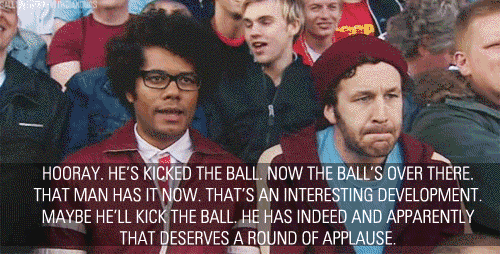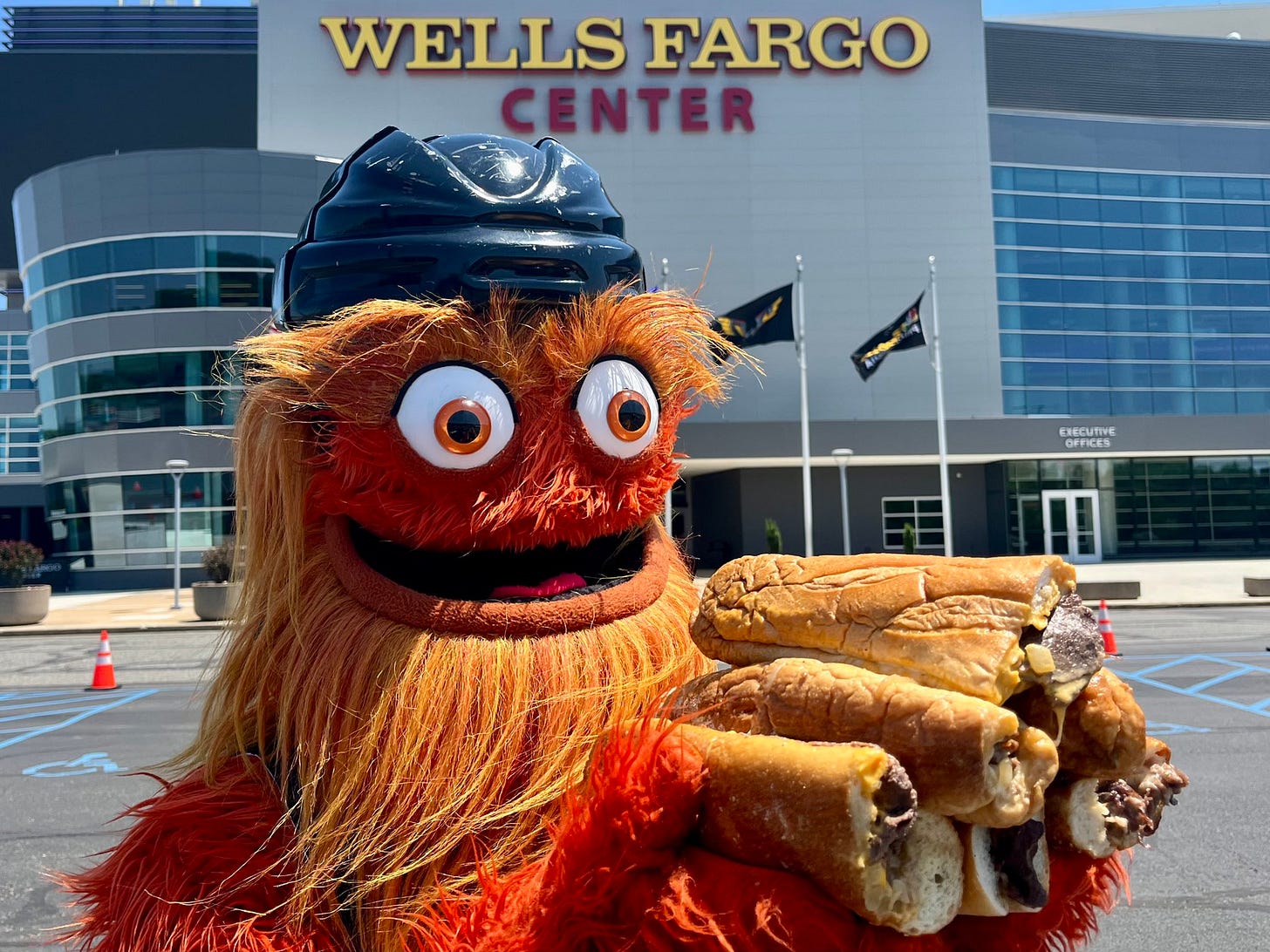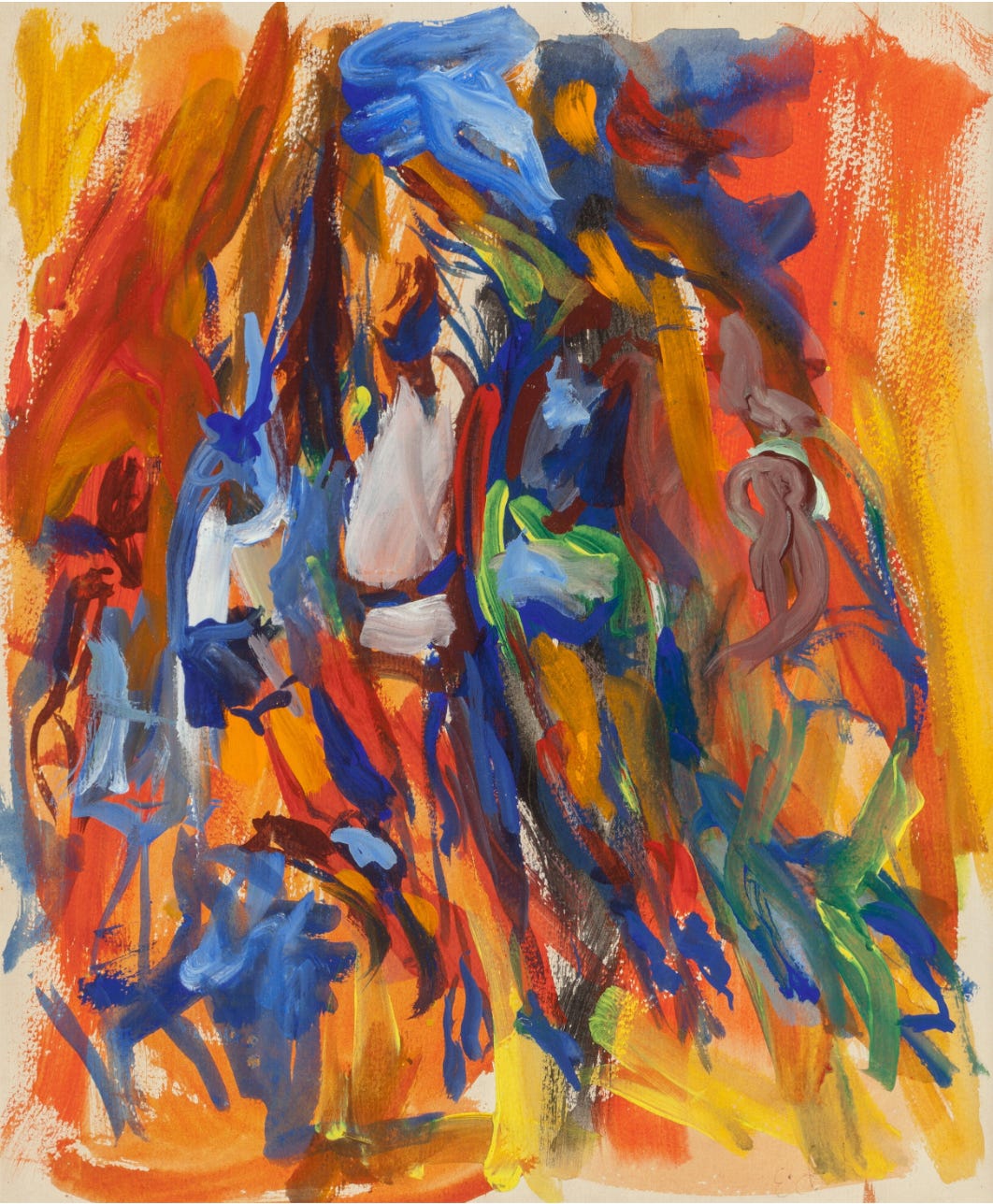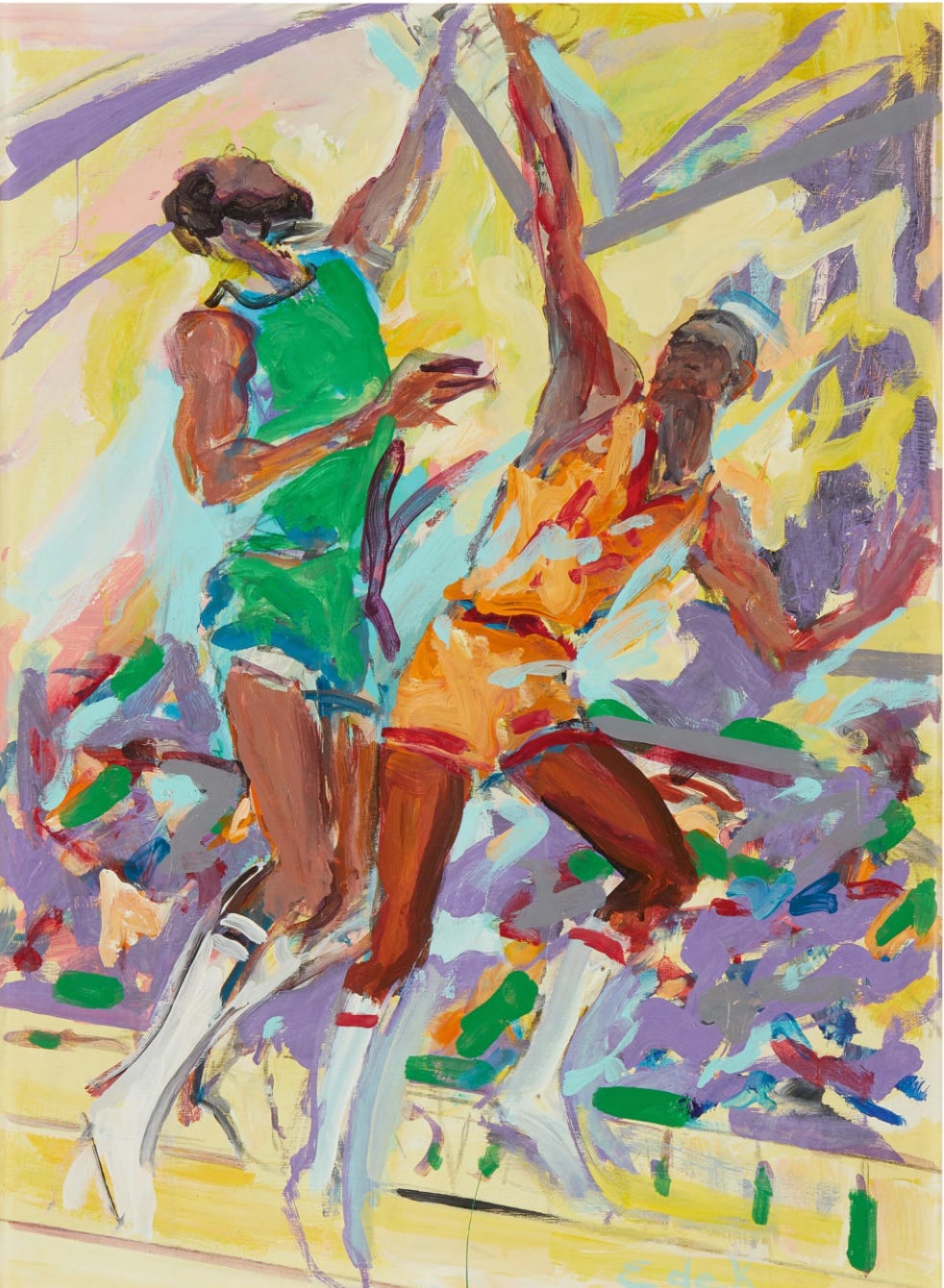I hope that, like me, you enjoyed the spectacle that is the Olympics. Being that I’m American, I get the pleasure of watching my team win again and again and again. But, being an Immigrant daughter, I get to cheer on the underdogs that are my parent’s teams.
While this is a week delayed due to personal and work issues, I cannot resist the urge to talk about art and the Olympics, or well, something like that. I’m not here to talk necessarily about Olympic art. It just doesn’t appeal to me, and I’m sure others have already done it much better than I could. I debated sharing some midcentury illustrators and their work. Bob Peak came to my mind, who has been shown on some of my pieces before and is a personal favorite. But there was only one person I could really talk about when it came to sports and art - Elaine de Kooning.
If you think it’s odd that Elaine de Kooning painted sports images you aren’t alone. It was odd to her contemporaries. It’s still somewhat odd. You can’t find a lot of them online. Elaine, frankly, isn’t known for painting sports. She’s mostly known for painting JKF. But there’s something wonderful to be found in Elaine’s sports paintings.
My image of Elaine largely stems from images I’ve seen of her and the group biography Ninth Street Women, which I’ve touted on Notes for how incredible it is. I find it hard to believe anyone could read that book and not fall in love with Elaine de Kooning after reading it, but I was still baffled to read about her foray into sports art. It intrigued me. Why did this midcentury artist who was front and center in the Abstract Expressionist movement paint sports of all things?
It wasn’t just that Elaine painted sports. She attended the games. Elaine would attend games, sketch from life surrounded by fans, then hurry home and paint from memory and pure emotion. If you’ve ever been to a live game, you know how your skin teems with life after, and Elaine drew from that. Her contemporaries were baffled by her work, though we could argue that Elaine was giving us a glimpse of the next big movement in art.
I’m not athletic, though I wish I was. But I’m from Philadelphia, which means when I get into sports I’m willing to bleed for sports. For those of you not from the United States, allow me to explain. Philadelphia, my beloved beloved city, is known for its…. intensity. I mean this across the board, but especially with sports. People burn stuff in celebration. Philly fans are known for starting fights. We’re known for being the most passionate (read: terrifying) fans.
To best understand Philadelphia and our intense energy surrounding sports, just look at Gritty. This literal personification of the spirit of Philly is the mascot for the Flyers, our hockey team.
As a rule, I tend to avoid watching because I get attached and emotional. I wish I could be Moss from the IT Crowd, but Philly runs strong in my blood. I’ve cried watching the Olympics the way I’ve cried looking at art, with a sudden attack of the heart that can only come from something reaching out and squeezing your soul. Art has long had domain of my heart, but when sports come to lay claim, it dominates.
Passion was a driving force in Elaine de Kooning’s life. She was constantly led by her passions, and her passions in turn led her to sports. In fact, Elaine would write and comment on sports, namely baseball. She went so far as to write in Sports Illustrated in the 1950s to discuss and dissect sports. She also painted a series of pieces centered on bullfighting, which despite what you may feel, is a sport.
The sports she painted (baseball, basketball, and bullfighting) are not largely known for Olympic glory (outside of basketball) (and I mean come on, The U.S. had Lebron and Stephen Curry). While I’m delighted Elaine painted my favorite sport (baseball), I’ll confess I wish she painted figure skating and gymnastics. While I was watching the men’s gymnastics all-around final, I couldn’t help but wonder, “How would someone paint this? No, how would Elaine paint this?”
For me, the most compelling part of watching the men’s gymnastics wasn’t the incredible athleticism, but the way they cheered each other on. Listening to the men’s team shout and cheer and jump around was pure joy. My sister and I were emotional as we watched the Turkish Men’s team during the qualifying rounds. They jumped around in delight as they cheered for their teammates, only to just barely not make it to the final.
A U.S. Men’s Gymnast has gone viral for appearing to have taken a nap (I’ve since been notified he wasn’t napping but visualizing his routine) while he waited to go on the pommel horse (my favorite part of men’s gymnastics!). For me, the best part is when he finishes his incredible set and the men are all screaming, cheering, and jumping around. They throw him up on their shoulders while he squints, trying to put on his glasses. “I don’t know what’s actually happening,” he confesses over their cheers. Unbeknownst to him, the U.S. Men’s team just won bronze, the first time they’ve medaled in 16 years.
It is this spirit I believe Elaine best captures in her work. She doesn’t focus on particular players outside of an athlete we’ll get to in a second. Rather, she keeps her figures vague. Instead, Elaine’s brushstrokes give us a sense of movement and immediacy. We are thrown into the action rather than the celebrity. I find this especially true of her basketball pieces. Elaine’s vague figures and use of color show us unity and support in the teams. They come together in support of one another, fluid and flowing in synchrony on her canvas. Elaine once said that ‘trust’ is one of the key factors in her work, and trust is something absolutely necessary among teammates. What is a team if they cannot trust each other to do their part?
Basketball #40 is easily my favorite of her sports paintings. The splash of colors are alive and vibrant. I’m never sure if she’s using literal colors the team wore or playing with color theory. Many of her basketball paintings seem to feature opposing teams in nearly complimentary colors, creating a dance on the canvas. This, paired with her fast brush strokes and lack of detail, only adds to the image of flow and speed.
We are thrown into this scene, front and center as the colors splash and the game is alive. I can hear the squeak of the sneakers on the ground, the collective gasp of the audience, and the heavy anticipation in the eyes of all the players as they trust in their teammates.
“Gentle or brutal, joyous or tragic; the gestures of space soaring, sinking, streaming, whirling; the gestures of light flowing or spurting through color. I see everything as possessing or being possessed by gesture. If the gestures are inhabited by landscapes, arenas, bodies, faces, animals, or just colors, it makes no difference to me.” - Elaine de Kooning (as quoted in Ninth Street Women by Mary Gabriel
By contrast, Elaine’s painting of one of the most well-known soccer/football players is painted with a different kind of reverence. As a portrait, it’s natural that her paintings of Pele are seated. Yet the painting is still breathing with movement and life. It is Pele alone who is stoic and calm while the world is fast-moving around him, painted in shades of blue. And she didn’t paint him once, but multiple times.
Being South American, I know of Pele much like everyone else. While I’m not Brazilian, even I cannot help but love Pele and Brazilian football. Clarice Lispector loved them, so how could I not? Elaine’s approach to the iconic Brazilian footballer is reverent, respectful, and yet still exploding with color. We find ourselves instantly drawn to his familiar face, to the legend we know so well. His face is framed by dark greens, perhaps the greenery of his native Brazil. While the canvas isn’t as action packed as Basketball #40, it’s breathing with life.
My coworker recently told me his disappointment that the Brazilian football team was not in the Olympics. “They have such grace,” he said. “I love watching them play.”
Grace seems an odd word in connection with soccer/football. My sister and I complained about how whiney male soccer players are, openly laughing at their theatrics. We’d never cared much for soccer until we watched Paraguay in the Olympics. And watching them, seeing Enciso and Fernandez on the field, I cannot help but agree with my coworker. They are graceful. Or, my boys are anyway. (Does this make me a Brighton fan now?)
Could we say that Elaine’s paintings add a touch of grace to sports? I think so. In the blend of bright colors, quick movement, and careful use of anatomy, Elaine gives the voracity of sports the elegance of ballet.
By contrast, her portrait of Pele is done with reverence, painted in 1982 when he had retired from soccer. There’s a sense of grandeur in how Elaine paints him, his neutrals a calming contrast to the colorful backdrop. This isn’t just anyone she’s painting, this is a legend. And she’s mindful of this. For all my jokes and memes about sports, there is nothing facetious about Elaine’s paintings. She has nothing but love and respect for the subject.
When the Olympics come around, there is always a shift in everyone. This particular Olympics has been interesting since it was also the announcement of the 2034 Winter Olympics coming back to Utah, so it’s all my coworkers talk about. What I find most interesting about the Olympics is the way everyone suddenly turns to the various sports (except maybe Break) in reverence.
My coworkers begged me to not spoil anything about the gymnastics finals as I watched on my phone. Everyone quietly discussed our fear of Simone getting the Twisties again. Records were broken. My sister and I discovered how incredible boating was. I debated with coworkers over which was better: Saber or Epee (Saber). Most times we cheered for our teams, sometimes we cheered for the underdogs.
For all that this Olympics certainly had its fair share of controversies and arguments online, there’s an overwhelming respect for the athletes. There are stories we will tell and retell in the years to come. There are children who are inspired by the athletes, who will take their first steps toward their own Olympic glory.
It’s this spirit, which I think is the heart of the Olympics, that made me turn back to Elaine de Kooning’s paintings time and time again. It’s that love and reverence for these athletes and sports that I see both in the Olympics and Elaine de Kooning.















Wonderful. Elaine might be my favorite character in NINTH STREET WOMEN, and I’ve long admired the purposeful energy of her work. The sports paintings are new to me. What a discovery. I wonder what she’d do with breaking.
I discovered her through her cave paintings and had no idea about her sports work. These are so amazing! They feel so ahead of their time, really contemporary in subject and color and style.